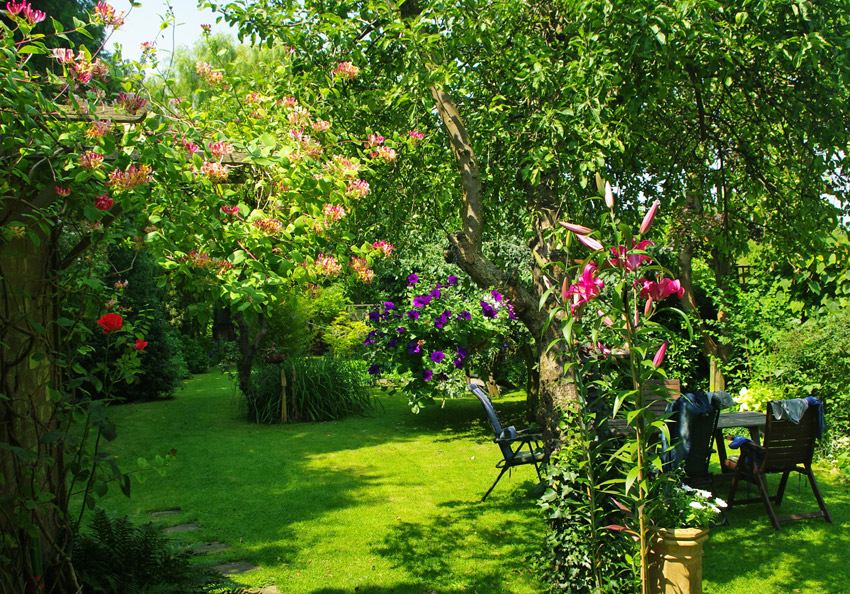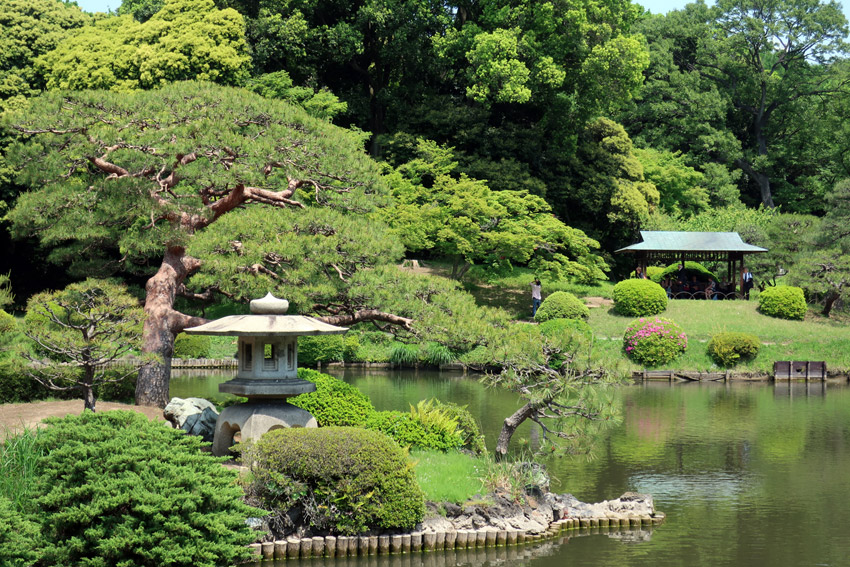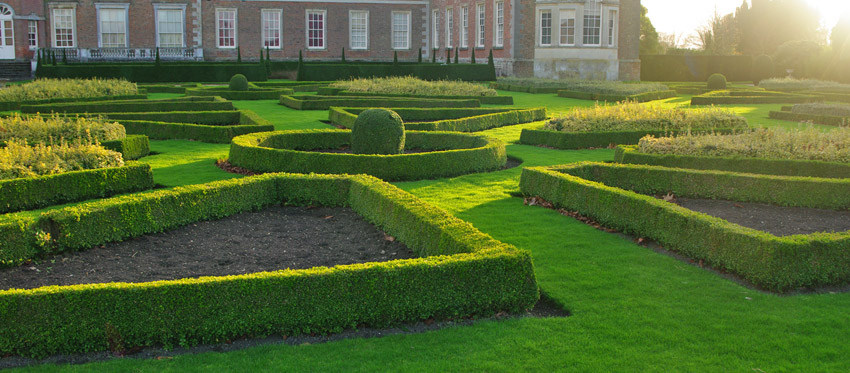Garden Styles - Garden Design
A brief description of the defining plants and principle features of a number of common garden styles
Most gardens are a bit of everything (or none of anything depending on how you look at it!), if you want to have a particular theme to your garden, it requires a certain amount of discipline.
What does often work rather well is to have just have a part of garden follow a particular theme, instead of the whole garden. That way you can indulge your less disciplined side elsewhere.
Cottage garden style- informal
Probably one of the most commonly referred to styles in the UK and certainly the most romantic. To be authentic a cottage garden is fairly labour intensive due to sowing and clearing up after the annuals and tending to the herbaceous perennials after they have flowered.
You can help the garden help itself, by allowing annuals to self-seed and planting the tall plants fairly close to each other with a hidden network of support amongst them. In this way the supports soon become hidden and the tall plants help to support each other. For instance in my cottage style front garden I allow hollyhocks, foxgloves, forget-me-not, Nigella, ornamental grasses and bronze fennel to self seed. They have done so happily now for about 15 years with my just removing any excess.
The cottage garden needs to be packed with plants for maximum
effect, little is required in the way of hard landscaping, containers
etc.
- Roses, especially old fashioned shrub and species varieties
- Delphiniums, shades of blue
- Hollyhocks
- Poppies, annual and perennial
- Deciduous trees including fruit trees
- Lupins
- Campanulas, bell flowers (large tall and smaller low ones)
- Hardy Geraniums
- Lavender
- Alliums
- Honeysuckles, grow through trees for best effect
- Rustic arches used as supports for climbers, especially roses
- Brick paths
Oriental garden style
You need to be very disciplined to maintain this look, plantings are restrained and of very few varieties of plants. Oriental gardens are almost entirely green. Low maintenance.
- Bamboos
- Japanese maples, Acer
- Clipped Buxus, box and Taxus, yew
- Picea, pines, trees and also lower growing shrub forms
- Hostas, watch out for slugs and snails
- Ferns
- Large boulders in a "sea" of gravel. The gravel should be raked into patterns that simulate flowing water.
- Rocks with a growth of moss
- Pools and pebbles with a traditional Japanese water feature, rice bowl or deer scarer
- Stone lantern / ornamentation
- Prunus, Spring flowering cherries
Mediterranean garden style
Becoming increasingly popular many Mediterranean plants are sun lovers and are drought tolerant almost to the point of requiring it. They can usually stand the cold of winter, but don't like wet along with the cold. Incorporate lots of sand and gravel into the soil with these plants to help them through the not-that-cold but continuously very damp English winter.
Needs an input of tender plants in the summer for authenticity. Otherwise fairly low maintenance especially due to those drought tolerant plants in the summer not needing watering regularly once established in the soil.

- Tall thin Italian cypresses
- Aromatic herbs, oregano, basil, etc.
- Rosemary
- Succulents (need winter protection from frost)
- Lavender, especially French lavender, though this doesn't like winter wet or exposed windy positions
- Santolina, cotton lavender
- Alliums
- Pelargoniums (usually known as half-hardy Geraniums), especially red flowered and the ivy-leaved varieties
- Eryngium, sea-holly
- Vines growing over a wooden pergola
- Terracotta pots
- Gravel mulches
- Olive trees
Tropical garden style
Not the easiest effect to achieve in the UK, requires tender plants for best effect (with associated maintenance). Mainly green with large leaves.
Many traditional flowers are not suitable as they don't give the right effect. Needs to be in a sheltered area so the large leaves aren't damaged, and needs appropriate hard structures to set the look off. Can require a lot of watering.

- Rhus, stags-horn sumarch
- Bamboo plants
- Wooden decking and bamboo features
- Cannas and Verbena for colour
- New Guinea Impatiens (busy lizzies)
- Gunnera
- Yuccas
- Palms
- Rheum
- Fatsia, castor oil plant
- Ferns
- Planted pools, informal or formal depending on preference
Formal garden style
Slow to establish due to the types of plants. Need to be vey disciplined to maintain the formality of the look, a small "indulgence" can spoil the whole effect.
Usually low maintenance once established however.
- Buxus, box and Taxus, yew topiary. Can be achieved with other plants but will need more regular clipping.
- Symmetrical layout.
- Low hedges of Buxus, box
- Statuary, urns, formal pots and containers
- Portland stone
- Roses in discrete beds
Wild garden style
Needs a fair amount of space to be done properly and so not the most appropriate for a small area, nor will a small area be particularly successful at attracting wildlife, but this depends on the location.
It is quite easy to get the "feel" of a wild garden however and they are often the most successful when they become increasingly wild with less of a cultivated look as you move away from the house (what do you mean that's what you've got already?). For a decorative rather than completely wild look, use a mix of cultivated and wild plants. In particular use cultivated varieties of native plants, Viburnum, Crab apples, Hawthorn etc.
Low maintenance, but can look a bit tatty and unkempt if no maintenance.

- Cultivated grasses
- Wildflower "meadows", inverted commas because real meadows are massive!
- Native trees and shrubs
- Syringia, Lilac
- Honeysuckles, growing up trees for support
- Buddleia
- Bark chip or gravel paths
- Informal pond with marginal plants
- Climbers
- Rustic timber arbour, arches, seats etc.
Picture credits: Italian garden - courtesy PROPOLI87, used under Creative Commons Attribution-Share Alike 4.0 International license | Wild garden - courtesy Paul Farmer, used under the Creative Commons Attribution-Share Alike 2.0 Generic license.
Copyright 2000 - present. All Rights Reserved | Privacy Policy Statement







